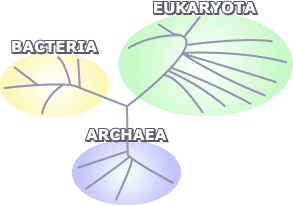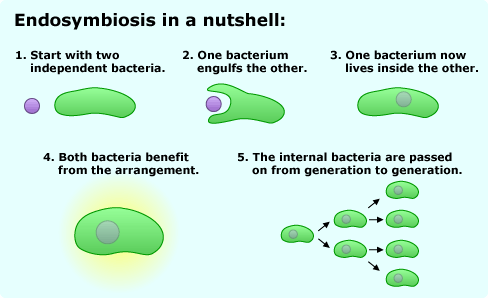 Living things have evolved into three large clusters of closely related organisms, called “domains”: Archaea, Bacteria, and Eukaryota. Archaea and Bacteria are small, relatively simple cells surrounded by a membrane and a cell wall, with a circular strand of DNA containing their genes. They are called prokaryotes.
Living things have evolved into three large clusters of closely related organisms, called “domains”: Archaea, Bacteria, and Eukaryota. Archaea and Bacteria are small, relatively simple cells surrounded by a membrane and a cell wall, with a circular strand of DNA containing their genes. They are called prokaryotes.
Virtually all the life we see each day — including plants and animals — belongs to the third domain, Eukaryota. Eukaryotic cells are more complex than prokaryotes, and the DNA is linear and found within a nucleus. Eukaryotic cells boast their own personal “power plants”, called mitochondria. These tiny organelles in the cell not only produce chemical energy, but also hold the key to understanding the evolution of the eukaryotic cell.
The complex eukaryotic cell ushered in a whole new era for life on Earth, because these cells evolved into multicellular organisms. But how did the eukaryotic cell itself evolve? How did a humble bacterium make this evolutionary leap from a simple prokaryotic cell to a more complex eukaryotic cell? The answer seems to be symbiosis — in other words, teamwork.
Evidence supports the idea that eukaryotic cells are actually the descendents of separate prokaryotic cells that joined together in a symbiotic union. In fact, the mitochondrion itself seems to be the “great-great-great-great-great-great-great-great-great granddaughter” of a free-living bacterium that was engulfed by another cell, perhaps as a meal, and ended up staying as a sort of permanent houseguest. The host cell profited from the chemical energy the mitochondrion produced, and the mitochondrion benefited from the protected, nutrient-rich environment surrounding it. This kind of “internal” symbiosis — one organism taking up permanent residence inside another and eventually evolving into a single lineage — is called endosymbiosis.


